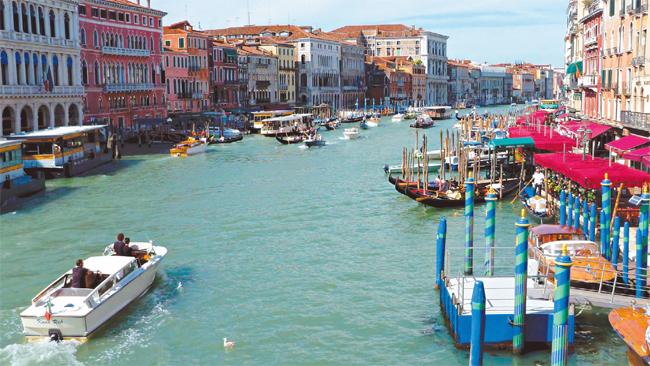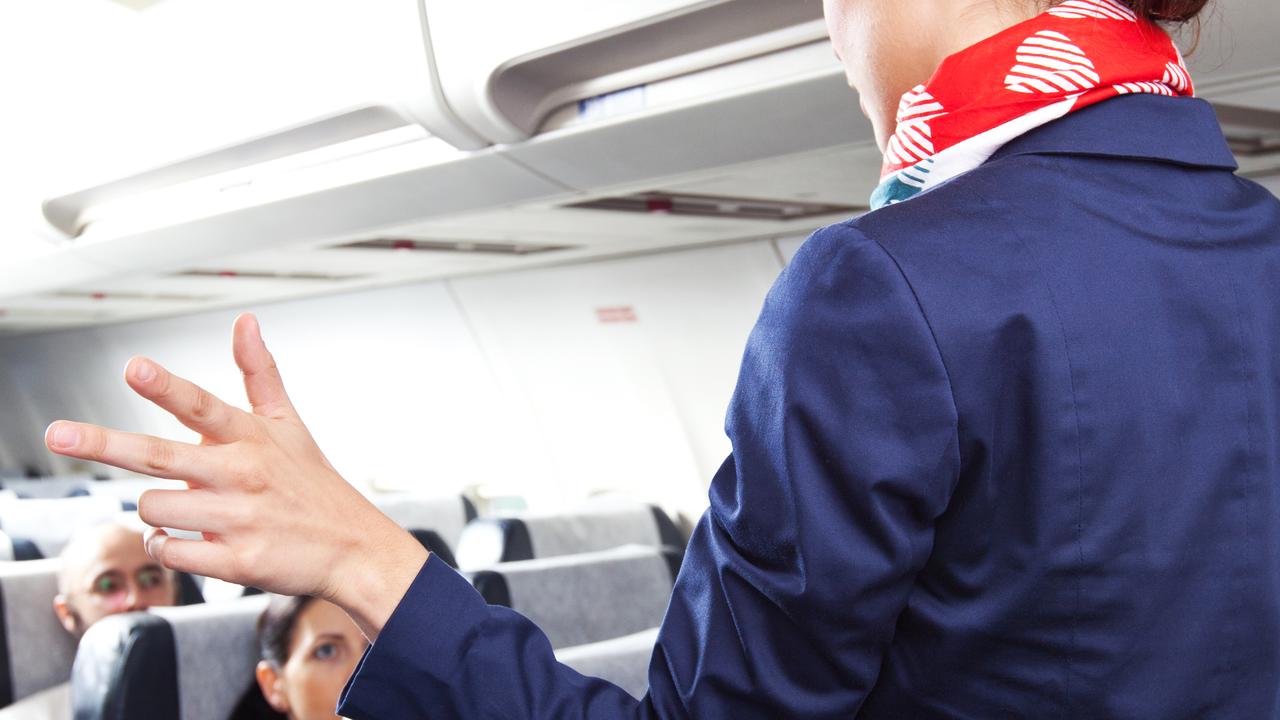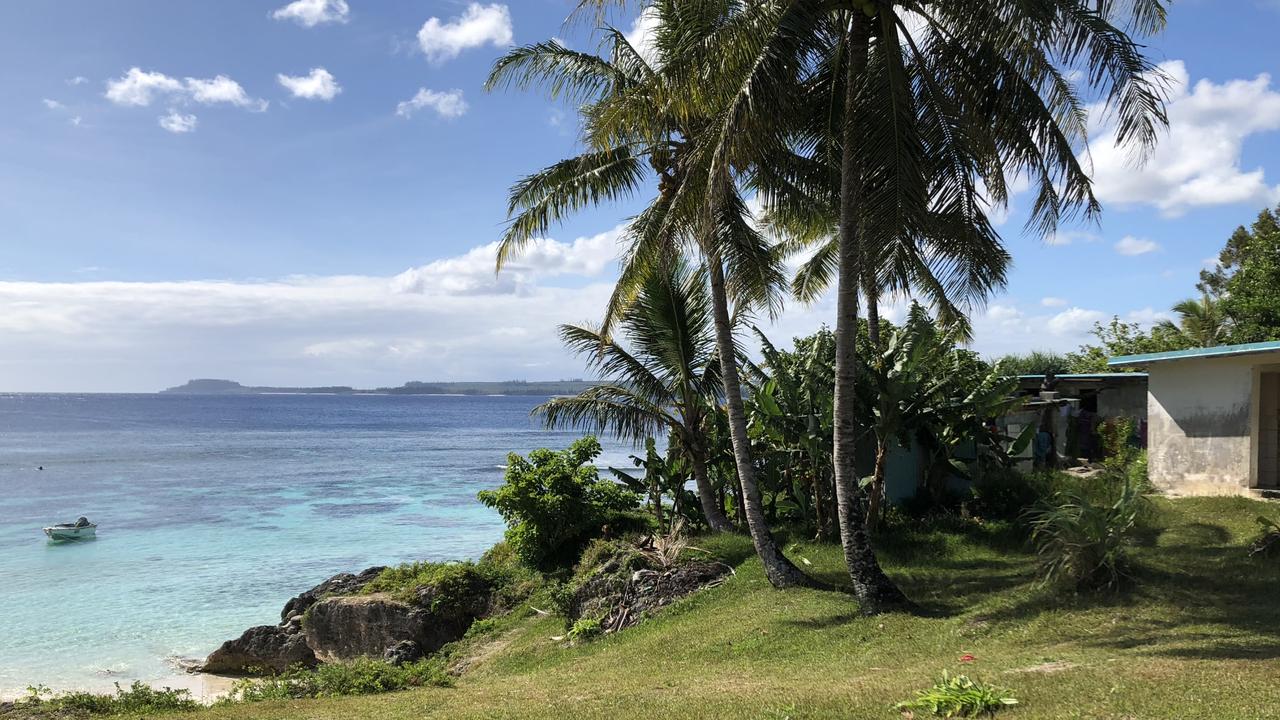Discovering Europe by train
FIND out how to stay in boutique hotels as you pass through Rome, Venice and Florence on Europe's high-speed rail network.

MENTION rail travel in Europe and most people think of France's TGV.
What's less well known is that Europe's high-speed rail network extends north into Germany and south into Spain and Italy. Taking the train is not only kinder to the environment than flying, but you also get to see some of the scenery you're hurtling through at 300km/h.
So, on a first trip to Italy with my girlfriend, we decided to let the train take the strain. We'd take the overnight train from London to Venice via Paris and then use the train to get between Venice, Florence and Rome.
We also chose to stay in properties from the same chain, in this case boutique hotel operator Baglioni. It turns out to be an inspired decision. The hotels all have access to the same reservation system, so they can easily make arrangements and check bookings.
Venice
Taking the train from London to Venice is a mixed experience. The Eurostar from London to Paris is fantastic but a lack of luggage storage at Paris Bercy station means we have to find somewhere to put our stuff while we spend the day exploring.
The Artesia overnight train to Venice leaves on time at 8.33pm, but a small sleeping compartment combined with several stops on the 13-hour journey mean sleep is elusive. All this is forgotten, however, when we emerge from Venice railway station at 9.30am to see the magical Grand Canal.
We hop straight on a vaporetto (water bus) and sit in wide-eyed astonishment as we zig-zag our way down this fairytale waterway. It's a wet Sunday morning, so there are few tourists around, but the canal is still busy with water taxis and gondolas.
Flowers tumble from window boxes, washing flutters on lines and all around are heartbreakingly beautiful canal-front mansions. We get off at St Mark's Square and head straight into the welcoming arms of the Luna Hotel Baglioni. Our bags are whisked away and we're ushered upstairs to the hotel's stunning breakfast room, a former ballroom complete with glass chandeliers and a beautiful, neckcrick-inducing frescoed ceiling. Our room is similarly opulent.
It takes me a little while to get a handle on Venice, where maps are of little use. You just have to head in a general direction and hope for the best. My biggest recommendation is to hire a guide. In two hours, Cristina shows us a selection of sights, restaurants and bars that become the highlights of our stay. I enjoy the art in the Ca' Rezzonico palace much more than in the more famous Academia.
The hidden, canal-front Taverna del Campiello Remer is the perfect spot for a drink at sunset. And the view from the San Giorgio Maggiore bell tower is arguably more impressive than that from its better-known equivalent in St Mark's Square.
Florence
Catching the train from Venice to Florence is a doddle. We had already reserved seats (compulsory on all high-speed trains), so all we have to do is validate our Eurail pass at the ticket office and write the day of travel on our ticket before boarding. Forget to do this and you could be fined.
The two-hour trip passes in a pleasant blur of green hills and golden wheat fields. The reclining seats are spacious and comfortable and in first class you get a complimentary snack and a glass of prosecco.
A big advantage of arriving by train is that you're delivered right into the heart of the city, so we're only a short taxi ride from our hotel. A former 18th-century mansion of the treasurer to the Pope, the Relais Santa Croce has 24 rooms, all individually decorated. Our suite has high ceilings, wooden floors and a mix of modern furnishings and antiques. Three sets of windows open to reveal a sigh-inducing view of the Santa Croce church and the rolling green Tuscan hills beyond. A flick through the guest book reveals that Brad and Angelina stayed here recently with their children.
Unfortunately, our guide here is a disaster, bombarding us with 13thcentury Florentine history for three hours, so we part company. Thankfully, Florence is eminently walkable and in an hour-long stroll we saunter through the sculpture-dotted Piazza della Signoria, past the impressive Duomo Cathedral and over the city's most famous bridge, the pastel-coloured Ponte Vecchio.
The next day we tackle one of the world's greatest repositories of Renaissance art - the Uffizi. I find it overwhelming. There is simply too much to see and too many people trying to see it. I much prefer the more manageable Bargello museum of sculpture, which has some beautiful works by Michelangelo and Donatello.
On the third day we head for the hills to explore the Boboli Gardens, a charming landscaped garden just south of the River Arno. We spend a lazy, sunny afternoon with a picnic, admiring the sensational views of the city and doing absolutely nothing.
Rome
The 11/2-hour train trip from Florence to Rome is similarly effortless. We sit next to an Italian couple acting out a mini-opera. There are arguments, apologies and even a love scene. When we get to Rome, it's all I can do to stop myself applauding.
Dotted around this ancient city are some of the most important historical ruins in the world. And you get the feeling Rome knows it. Five euros ($7) is all it costs us to get a taxi from the train station to the Regina Hotel Baglioni, an imposing riot of marble columns, sweeping staircases and opulent rooms.
Located on one of the city's most elegant tree-lined streets, Via Veneto, it's only a short stroll to the tourist hot spots of the Trevi Fountain and the Spanish Steps, as well as the metro.
To get our bearings, we climb the 320 steps that wind around the architectural wonder that is Michelangelo's Dome in St Peter's Basilica. It's a strenuous and claustrophobic ascent but the reward is a 360-degree view of the city.
The following day we visit the Roman Forum and the Colosseum. Thankfully, we have a guide to make sense of this jumbled mismatch of ruins. Antonio brings the place alive. With so much history, it's easy to forget Rome has a modern side. We stumble across it along the banks of the River Tiber, when we find a row of pop-up bars, providing a free buffet to a throng of arty-looking types.
We've had barely enough time to scratch Rome's surface. But given some attractions have survived for 2000 years, I reckon they'll be here next time.
The writer was a guest of Virgin Atlantic, Rail Europe, Baglioni Hotels and the Italian Tourism Board Top tips: Europe Destination Guide
Top tips: Europe Destination Guide Airport: Best stop-overs enroute to Europe
Airport: Best stop-overs enroute to Europe



